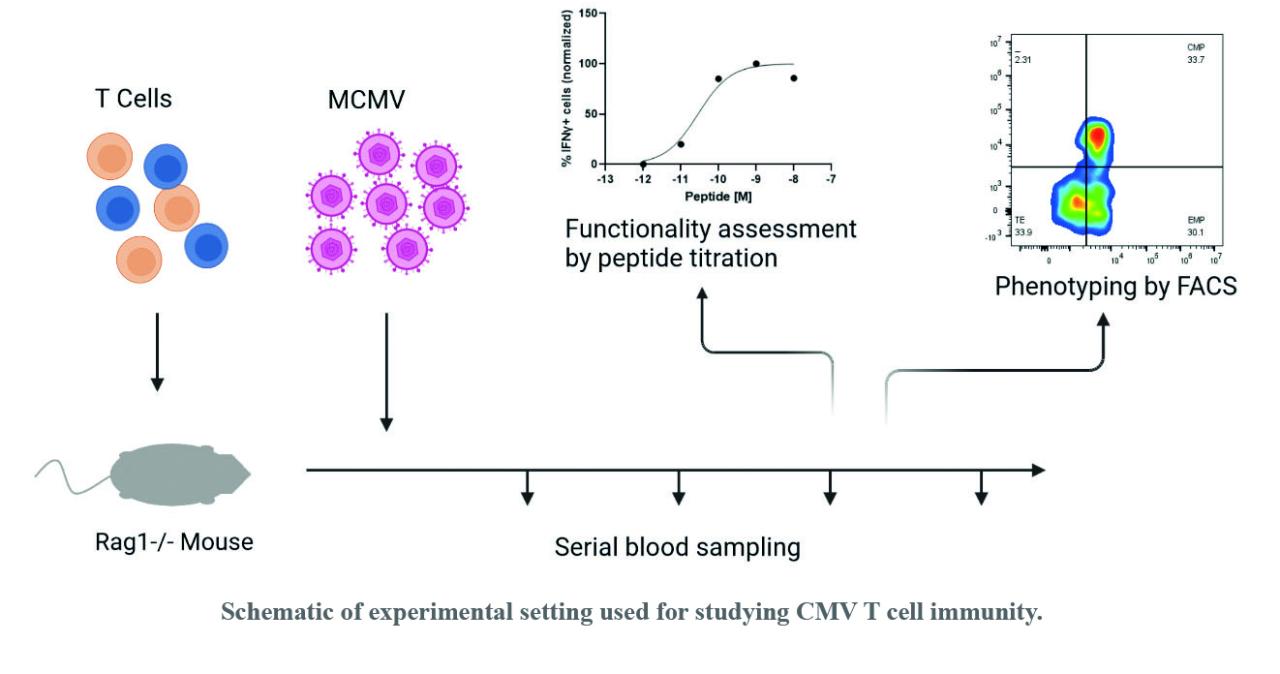
During acute infections, responding T cell populations expand to clear the pathogen, after which they retract to leave a small population of long-lasting memory cells. Infection of an organism by Cytomegalovirus (CMV), however, is never cleared, and can thus stimulate responding T cell populations for the lifetime of the organism. T cells repeatedly stimulated by CMV infection on chronic timescales develop into extremely large populations which do not contract, a phenomenon known as memory inflation. This chronic antigen stimulation does not exhaust the T cells however, which instead remain strongly differentiated yet functional.
Earlier work from our lab indicates that the composition of the inflationary population changes over time, with lower affinity TCR clones gradually becoming dominant relative to the higher affinity TCR clones which initially dominate the response. Despite this evolution of the population composition at the TCR clone level, the overall functionality of the population appears to be maintained. Because TCR affinity is associated with functionality, this implies there is a compensatory change of the functionality in the lower affinity TCR clones. We seek to investigate this with functional characterization of TCR clones within evolving TCR repertoires in the murine CMV model.